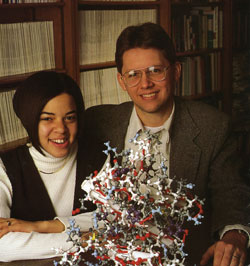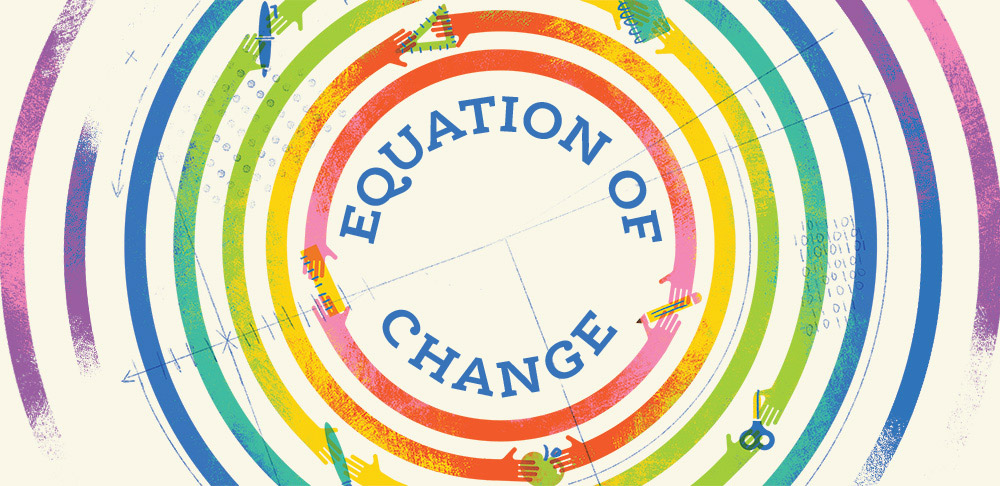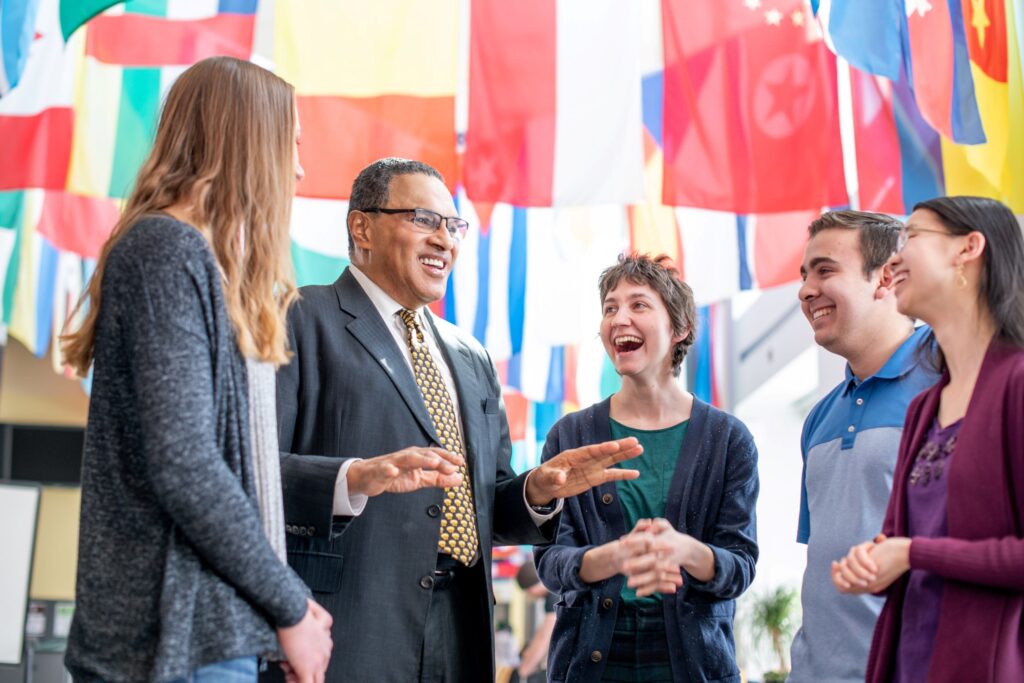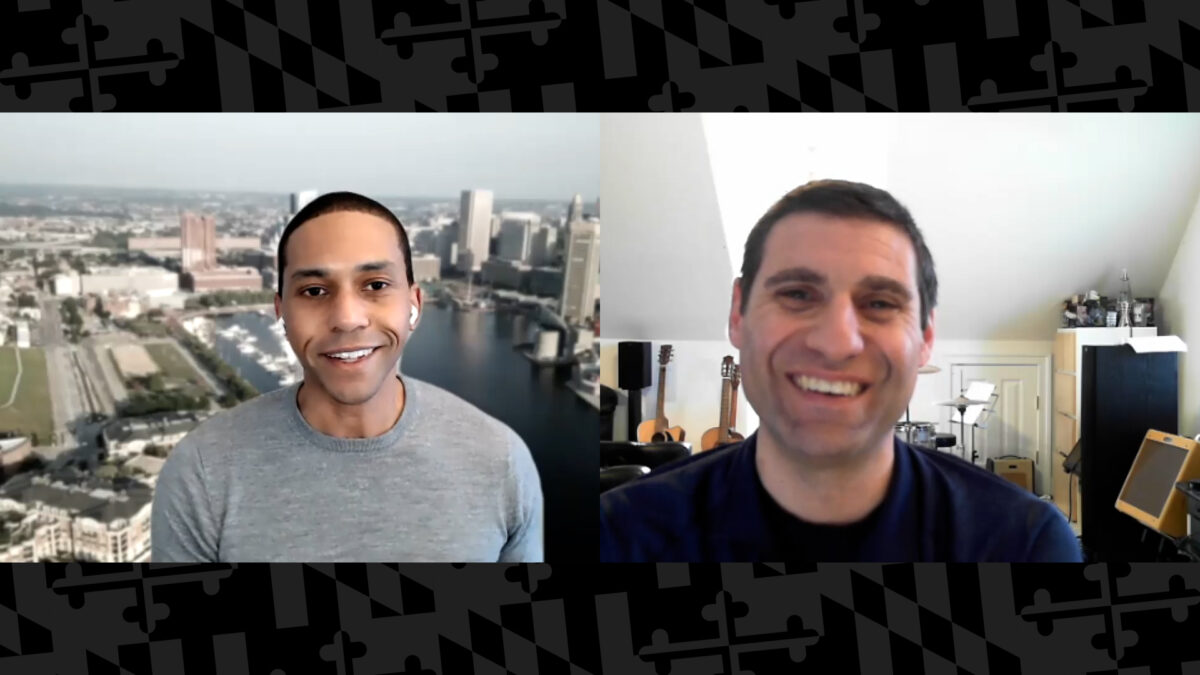Dr. Michael Summers is the Robert E. Meyerhoff Chair for Excellence in Research and Mentoring; a Distinguished University Professor; and an Investigator with the Howard Hughes Medical Institute. Over the years, he has worked with dozens of Meyerhoff scholars in his lab. UMBC Magazine sat down with Summers to talk about his history with the Meyerhoff Scholars Program, now celebrating its 30th year.
UMBC Magazine: Can you tell us what your involvement has been with the Meyerhoff Scholars Program over the years?
Mike Summers: Well, I have no administrative role with the Meyerhoff program. I got started when [UMBC President] Freeman [Hrabowski] was vice provost, and I was an assistant professor. He called me up, and we talked about general things, like my life, my background. He said, “Thanks for meeting with me, and I remember leaving, thinking, “What was that about?” Then maybe a couple of months later, a young student, Chianna Paschall, came into my office and wanted to do research. I said, “What’s your GPA?” She said, “Well, I have a 4.0, and I’m a Meyerhoff Scholar.” And I said, “Oh, tell me. What is Meyerhoff?”
Then she ended up doing some very high-profile work that was published on the cover of a journal and now it’s in a lot of textbooks. The next year, there were about four Meyerhoff scholars who wanted to work in my lab. And, now there are typically 20 or so undergraduates in my lab, including not only Meyerhoff Scholars, but MARC and BUILD scholars as well, along with UMBC students who aren’t in any particular program.
UMBC Magazine: How do you make sure students are on the right track with their research?
Mike Summers: What I try to do is get students to start talking to faculty about research after their first semester at UMBC. I encourage them to meet with different faculty, learn about their research, talk to students in the lab, find out if it’s an environment and the kind of research that they’re interested in. Do they think they could have a good rapport with a faculty member? I always say there are no bad mentors. There are just poor mentor-student dyads.
There are some faculty who probably would be terrific mentors to only a few students who need a certain type of mentoring. I think our best mentors are those that can adjust to a broader range of student needs. UMBC is fortunate because we’ve got lots of really terrific mentors and research labs, so students can choose from a multitude of really good opportunities. If a student comes and says they want to work in my lab, I first make sure that they’re on good academic footing because I tell them, “No matter what you want to do when you graduate, people are going to look at your GPA first.”
UMBC Magazine: How would you describe the effects of the Meyerhoff Scholars Program on the way you and others teach? And how has that changed over time?
Mike Summers: Think about what happens when you intentionally put a group of 20 or 25 high-achieving minority students shoulder to shoulder in the front row of a classroom of 350 students. They are in their seats 10 minutes before class, asking good questions and typically doing extremely well on exams. It causes you to change the way you think about the abilities of minorities in science. Prior to Meyerhoff, the well prepared minorities would be sprinkled around the class or sitting in the back. They didn’t stand out, and we tended not to notice or pay attention to them even when they did do well. As a white male who was raised in the South, I had my own set of prejudices and misconceptions when I started at UMBC. But I believe that people who go into academics typically do so because they want to do something good for society. They generally want to do the right thing. So it’s a natural thing for us to see that kind of performance among minorities in our classrooms and laboratory, and then go home and look in the mirror and say, “Wow, I couldn’t have been more wrong in my thinking.” When that happens, faculty like me begin reaching out and communicating in different ways. Our expectations just naturally go up, for all students.
And I think the high visibility of the Meyerhoff Scholars also raises expectations among minorities who are not in the program. Consider a non-Meyerhoff who earns a C on their first entry-level chemistry exam; it’s not that they haven’t studied hard, but they don’t know how to study for a college-level exam. For me, it took years to figure out how to go from a C/B average to a B/A average. They get their first test back, and because they weren’t asked to just recite what they’ve been taught, as happens often in high school, they were asked to take what they’ve been taught and apply it in a way they’ve never seen before, and they don’t know how to do that yet. Now, the sense of imposter syndrome creeps in.
So, I believe that the Meyerhoff program directly addresses imposter syndrome because these students look up in that front row and there are those Meyerhoff Scholars who are making As. Rather than thinking, “I don’t belong here. Society was right. I’ve been hearing this message my whole life,” they instead think, “Okay, what do I have to do differently?” They might go to the tutorial center and be tutored by somebody who looks like them and has common life experiences. What our studies show is that the number of minorities who aren’t even in the program and graduate with science degrees has increased dramatically since Meyerhoff started, even for students who are not in the program. As the saying goes, a rising tide raises all the boats up.
UMBC Magazine: Have you seen these changes happen beyond UMBC?
Mike Summers: Fortunately, yes! Over the years, lots of schools have visited UMBC and learned about our program, but they tended to pick and choose what they wanted to do. They had some success, but nothing like our success. A few years ago, the Howard Hughes Medical Institute funded a partnership experiment between UMBC, UNC, and Penn State. The leadership at those schools expressed a willingness to “go all in.” It was a risky thing for HHMI to support: Freeman has shown what can be done at a majority school by a dynamic, charismatic black leader. The chief diversity officer at Penn State said, “This will never work here because parents of high-achieving black children will not trust us with their kids. They are so isolated. Their minority population is much, much lower than UMBC’s as a percentage, and they don’t have the history.” The question was, can it be done at different institutions with majority leadership and with different histories and different geographies?
Penn State and UNC agreed to try to replicate Meyerhoff as faithfully as they possibly could, and they got help not only from UMBC administrators, faculty, and staff, but even from Meyerhoff Scholars who visited their campuses and helped them recruit their first cohorts.
The best news is that their outcomes dramatically exceeded expectations — reaching Meyerhoff-like academic performance, retention, and matriculation to Ph.D. and/or M.D./Ph.D. programs in their very first year. Both programs are now institutionalized and supported by major endowments, and both continue to share ideas and outcomes with UMBC as we work together to strengthen our programs and show the rest of the nation how true inclusive excellence can be achieved.
Tags: meyerhoff




